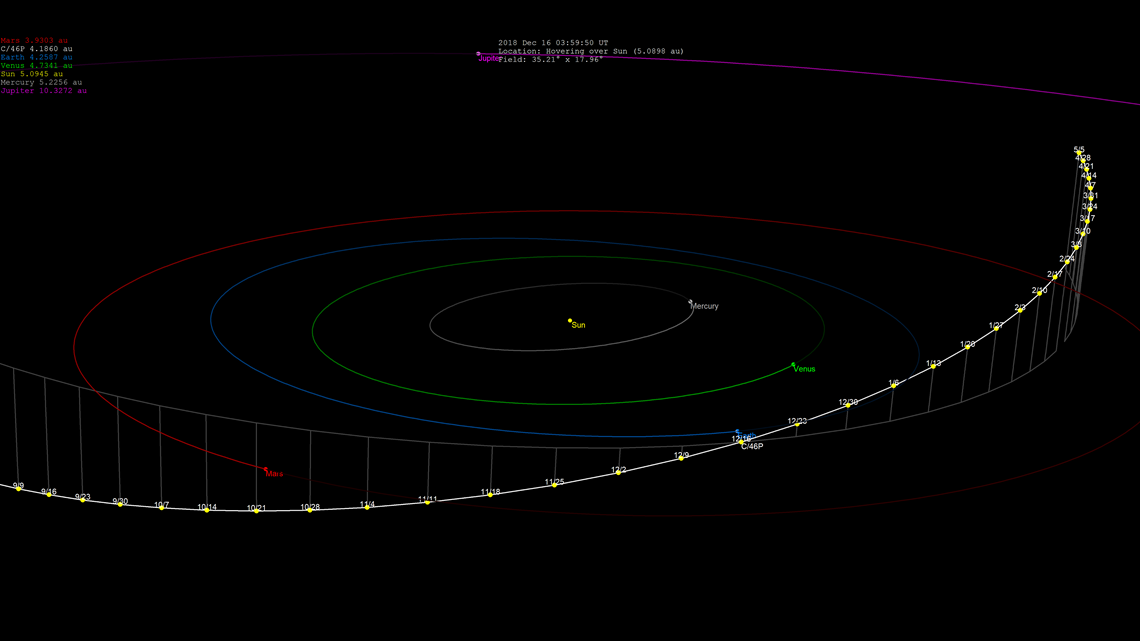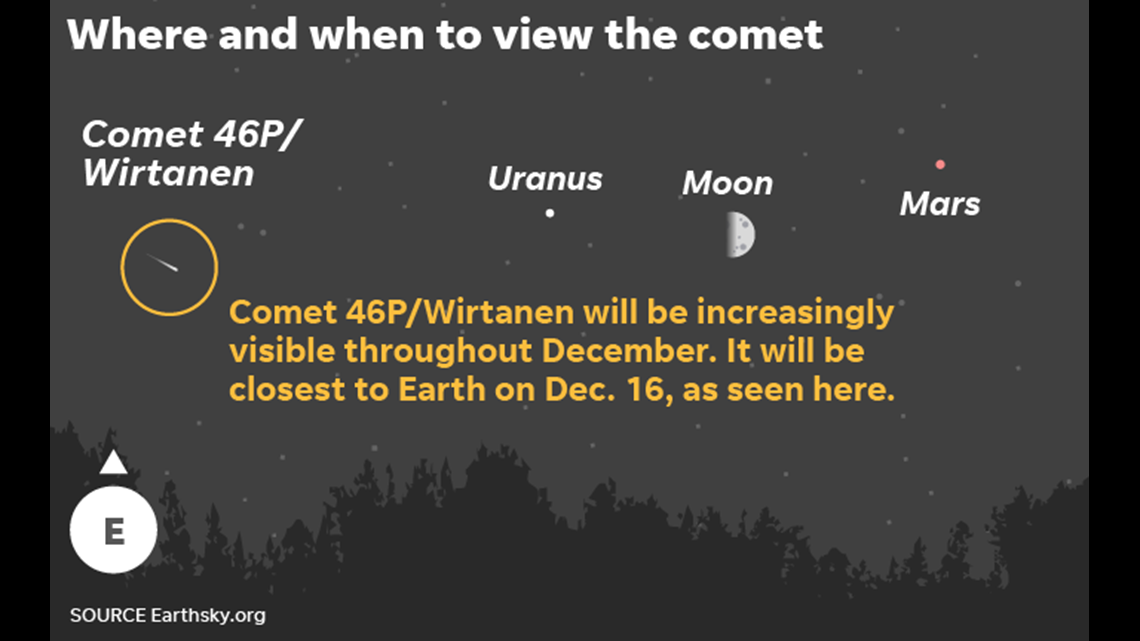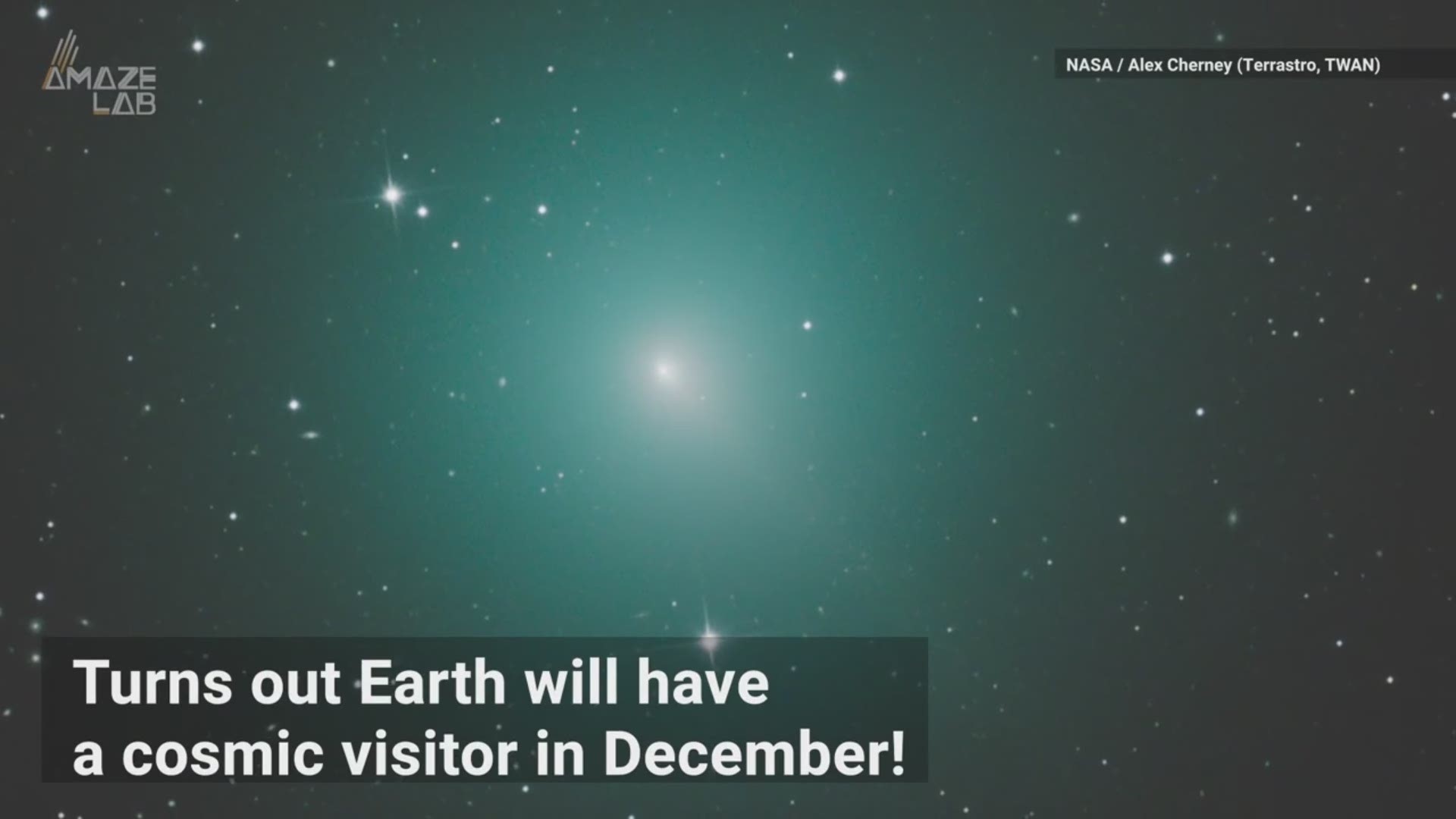Columbia, SC (WLTX) — Amateur astronomers will have an early holiday present when 2018’s brightest comet makes a pass close to Earth next week.
Comet 46P/Wirtanen will passed close to the Sun on Dec. 12, and will be closest to Earth on Dec. 16.
According to University of Maryland astronomers, this passage of 46P/Wirtanen will be the 10th closest approach of a comet to Earth in modern times, about 7.1 million miles (30 times the distance to the Moon).
46P/Wirtanen is a member of the Jupiter family of comets and takes 5.4 years to complete its orbit -- from just outside of Earth’s orbit to just inside of Jupiter’s path around the sun. The last time 46P/Wirtanen passed this close to Earth was the year of its discovery by American astronomer Carl A. Wirtanen on Jan. 17, 1948.


Martin Bowers, who runs the weekly public observation at Melton Observatory at the University of South Carolina, says that 46P/Wirtanen is unusual in that “the comet doesn’t put out enough gas to form a tail and thus looks like a fuzzy blue/green ball in recent photos.”
So… will 46P/Wirtanen be visible to the unaided eye? According to EarthSky, the comet might reach a magnitude of 3.5 to 6, perhaps visible as a faint, diffuse object in dark skies. Binoculars and small telescopes should enhance the view, but due to the comet’s orientation in space relative to Earth, the ion tail will be behind the comet and not visible from Earth.
To locate the comet in the night sky, face east shortly after nightfall and look for the familiar stars in the constellation Orion. The three stars that make up Orion’s belt should point toward the stars that compose the Pleiades cluster in Taurus. Comet 46P/Wirtanen should be located very near that easy-to-find grouping of stars.


Observers using a small telescope should be able to perceive the motion of 46P/Wirtanen relative to the stars over a 30-minute period. The comet will be approaching Earth at a speed of 21,251 miles per hour, or 9.5 kilometers per second.
At USC, the next public viewing at Melton Observatory is 8-10 p.m. Monday, Dec. 10, weather permitting. There are no plans for viewing Comet 46P/Wirtanen as USC’s Winter Break begins on Dec. 17.
If you’d like to track the comet’s orbit in relation to our solar system, check out the model at theskylive.com. You can adjust the time code tracker at the bottom of the screen and enable time lapse animation at the top left portion of the screen.

